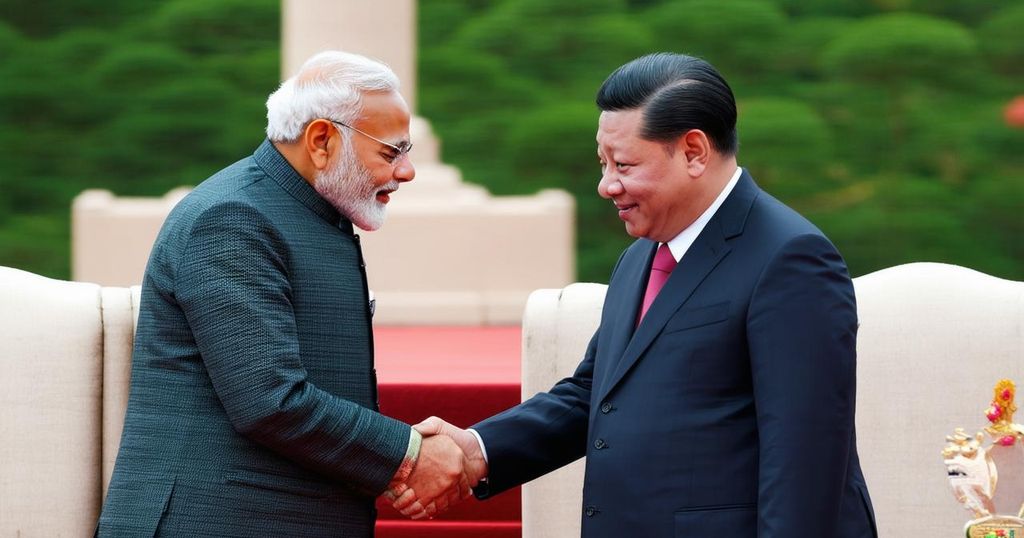Renewed Dialogues: Modi and Xi’s Meeting Signals Thaw in India-China Relations
Indian Prime Minister Narendra Modi and Chinese President Xi Jinping held a significant meeting at the Brics summit in Russia, marking a formal dialogue after four years of tensions over border disputes. Their agreement to pursue disengagement and resolution of issues demonstrates a thaw in relations following a series of confrontations. Both leaders emphasized the importance of maintaining peace and trust, setting a foundation for future discussions aimed at stabilizing bilateral ties.
In a significant development, Indian Prime Minister Narendra Modi and Chinese President Xi Jinping convened for a formal meeting during the Brics summit held in Russia, marking the first such discussion in four years. This meeting follows a series of confrontations along their disputed Himalayan border, culminating in a violent clash in Galwan Valley in 2020. The recent dialogue between the two leaders comes in the context of a mutual agreement to proceed with “disengagement and resolution of issues in these areas.” Both leaders expressed commitment to resuming constructive dialogue, highlighting that the resolution of tensions was imperative. The backdrop of India-China relations has been fraught with complexities, influenced heavily by a 3,440-kilometer-long border with ambiguous demarcations that have historically generated disputes. The enmity between the two nations dates back to their war in 1962, with persistent skirmishes occurring even after a partial troop withdrawal was initiated post-2020. The deterioration of ties has extended beyond military confrontations, affecting economic relationships as well. India’s increasing scrutiny of Chinese investments and the subsequent bans on several popular Chinese applications are examples of the rising tensions impacting bilateral trade. At the Brics summit, Modi and Xi underscored the significance of restoring stability and trust between their nations. They have resolved to designate a meeting for their senior officials to further address outstanding issues along the border. In a recent statement, India’s External Affairs Minister S. Jaishankar confirmed that progress had been made in disengagement efforts, with approximately 75% of the withdrawal issues resolved. Looking ahead, both leaders expressed the necessity of maintaining peace and stability on the border. Modi remarked, “Maintaining peace and stability on the border should remain our priority. Mutual trust, mutual respect and mutual sensitivity should remain the basis of our relations.” China’s foreign ministry acknowledged the recent agreements and emphasized the importance of collaboration with India to ensure successful implementation of the resolutions.
The relationship between India and China has historically been characterized by territorial disputes, primarily stemming from an ill-defined border that extends for over 3,000 kilometers. Following a brutal war in 1962 and subsequent confrontations, the relationship has fluctuated between hostility and cautious engagement. Recent years have seen tensions escalating due to military altercations and political decisions, such as India’s repeal of Jammu and Kashmir’s special status in 2019, which China condemned. The clashes in Galwan Valley and subsequent incidents in Sikkim and Tawang further strained relations, prompting both nations to seek avenues for dialogue and resolution.
The meeting between Prime Minister Modi and President Xi marks a critical step towards thawing relations between India and China following years of tension stemming from territorial disputes. Both leaders have committed to restoring dialogue and resolving outstanding issues, asserting the importance of stability at their shared borders. As they move forward, mutual trust and respect will be essential components in rebuilding this complex relationship, with broader implications for regional and global stability.
Original Source: www.bbc.com




Post Comment